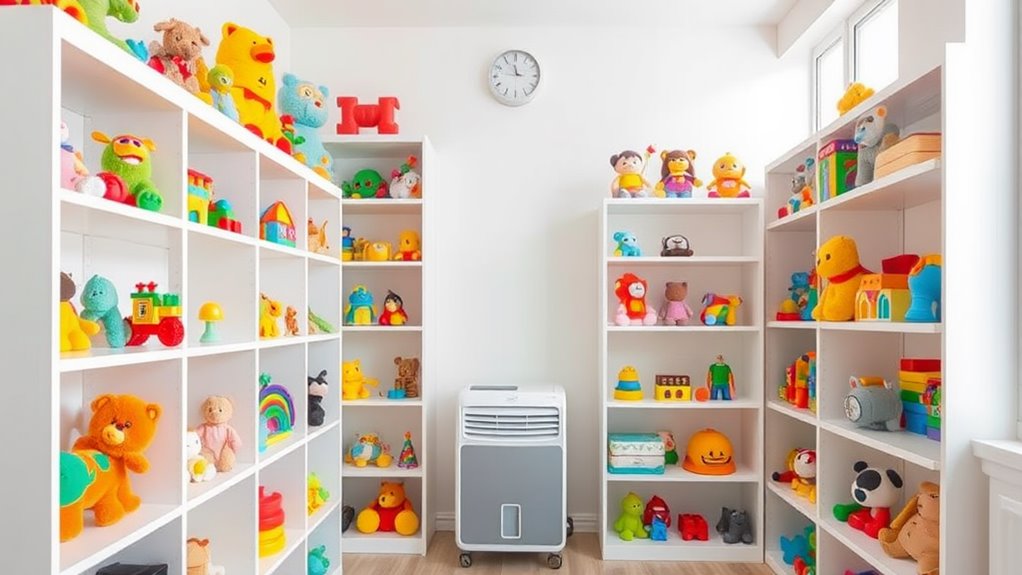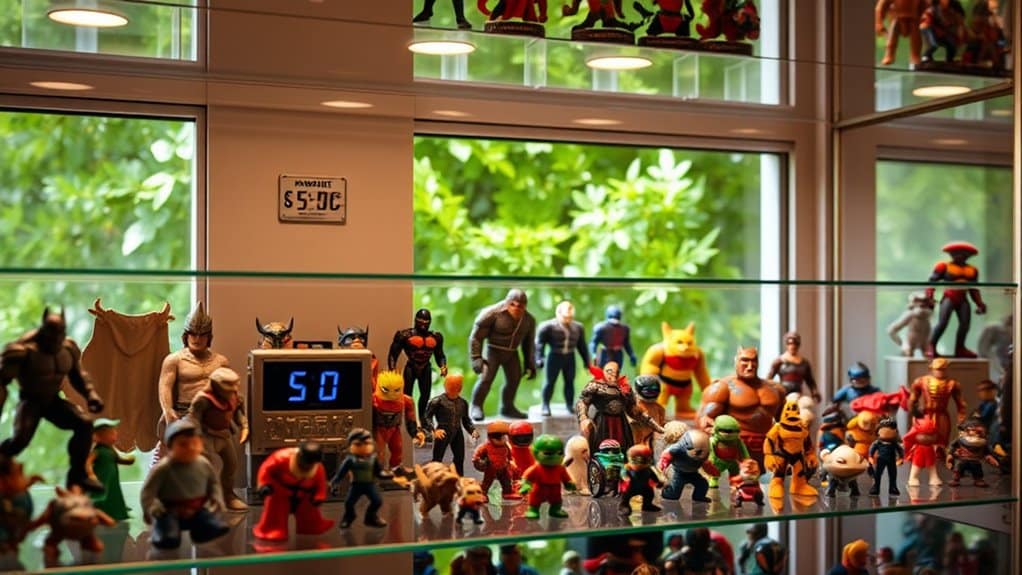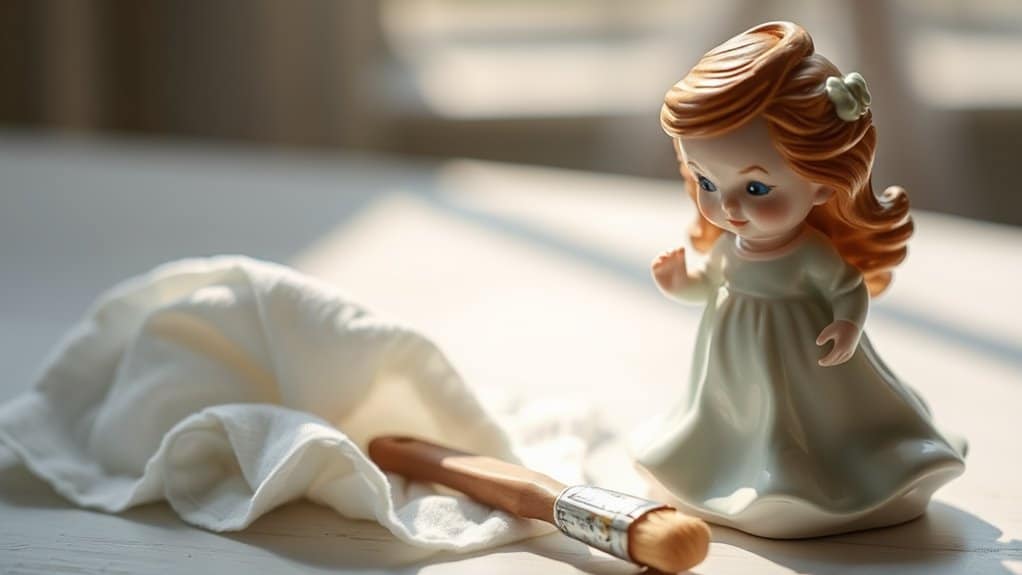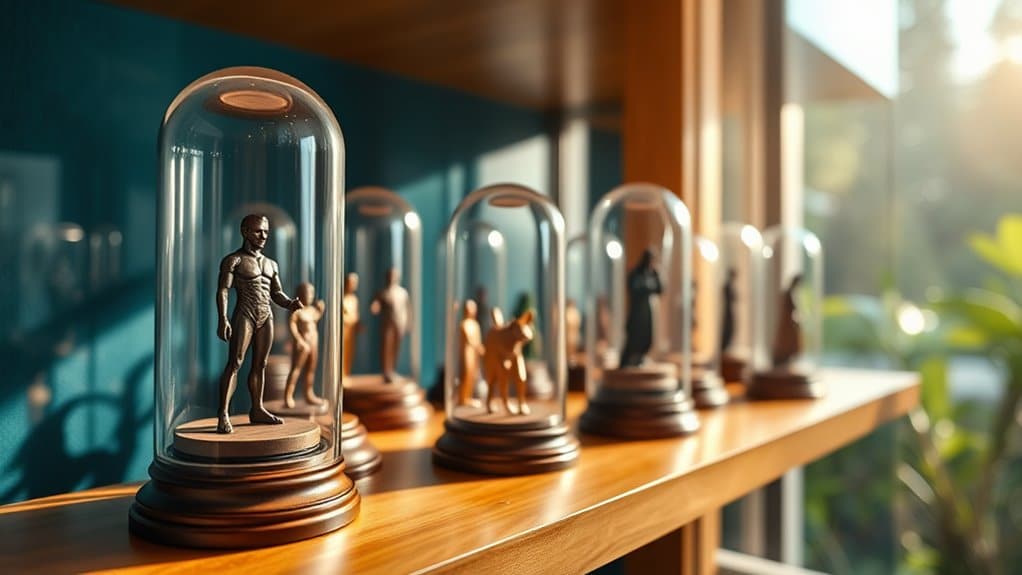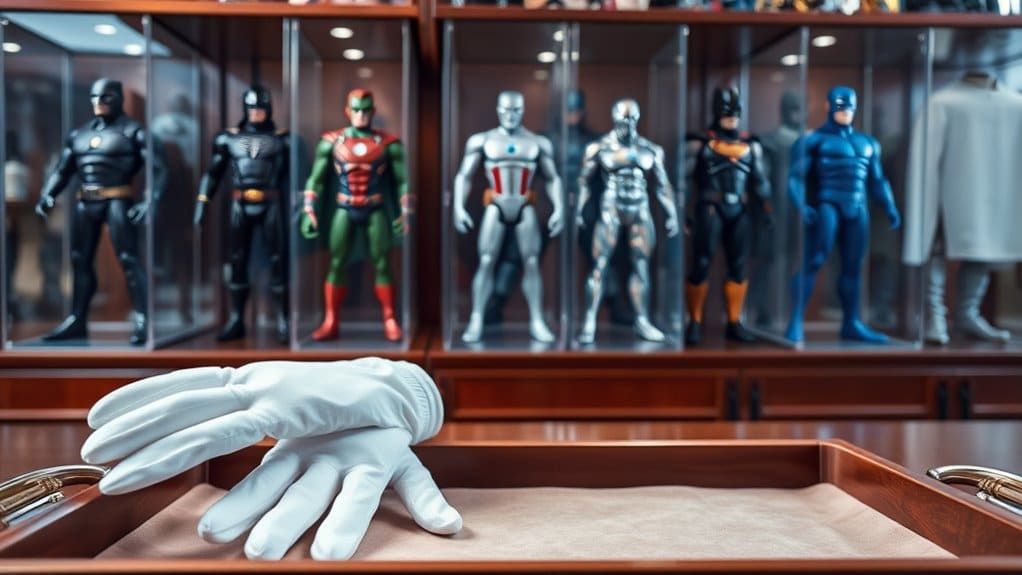To prevent mold in toy displays, guarantee proper ventilation by keeping air circulating and unobstructed. Keep indoor humidity between 30% and 50% using a hygrometer and dehumidifier. Regularly clean and dust your displays using a microfiber cloth. Use mold-resistant materials like treated wood or metal for shelves. Routinely inspect your display area, looking for signs of moisture and guaranteeing ventilation systems work efficiently. By following these steps, you can protect your cherished collections. Discover all the details ahead.
Ensure Proper Ventilation
Proper ventilation is key to preventing mold from taking hold in your toy displays. You should guarantee air circulates freely around the toys, reducing the chance of moisture accumulation. Start by opening windows or using fans to promote airflow. Position your displays away from walls, which can trap moisture and impede air movement. Consider using an exhaust fan if the area is enclosed, as it'll help expel any dampness. Regularly inspect and clean air vents to keep them unobstructed.
It's essential to avoid overcrowding your display areas. Space out items to allow air to move around them easily. If possible, utilize display cases with ventilation holes. By taking these steps, you'll maintain a fresh environment, keeping your cherished toys mold-free.
Monitor Humidity Levels
While guaranteeing good ventilation helps tackle mold, keeping an eye on humidity levels is just as important. You should aim to maintain indoor humidity between 30% and 50%. Use a hygrometer to measure the humidity in your display area. These devices are affordable and give you real-time readings. If humidity rises, consider using a dehumidifier to bring levels back down. Place the dehumidifier in a central location for even moisture control. Remember to check and empty the dehumidifier's reservoir regularly. Another option is to use silica gel packs in enclosed displays to absorb excess moisture. They're a simple, cost-effective solution. By monitoring humidity, you'll protect your toy collection from mold growth and guarantee it remains in pristine condition.
Regularly Clean and Dust Displays
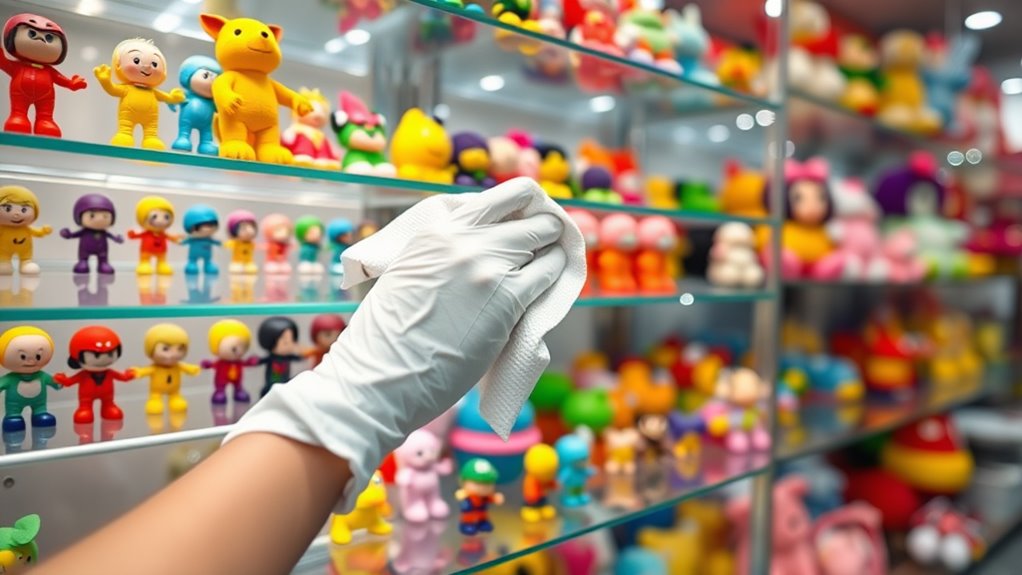
Keep your toy displays sparkling by regularly cleaning and dusting them. Dust and grime can accumulate quickly, creating a perfect breeding ground for mold. Grab a soft, microfiber cloth or a gentle duster to sweep away dirt from shelves and toys. Use a mild detergent solution for any stubborn spots, guaranteeing you don't soak the toys, as excess moisture invites mold.
Don't forget to clean behind and underneath the displays, where dust often lurks. Regular cleaning not only keeps toys looking their best but also reduces allergens. Make it a habit to inspect your display weekly, wiping surfaces to maintain freshness. By staying proactive, you'll guarantee your displays remain attractive and mold-free, safeguarding your precious collection for years to come.
Use Mold-Resistant Materials
One effective way to prevent mold in your toy displays is by using mold-resistant materials. These materials are designed to resist moisture, reducing the chance of mold growth. When selecting shelves or cases, opt for options made from materials like treated wood, plastic, or metals that have mold-resistant properties. You can also find paints and finishes specifically formulated to inhibit mold.
Integrating mold-resistant materials into your display setup not only keeps the toys safe but also maintains a clean and healthy environment. Swap out any fabric components with synthetic fibers or specially treated textiles that repel moisture. By investing in these materials, you're taking a proactive approach to mold prevention, saving yourself time and hassle in the long run. Prioritize mold-resistant options to keep your displays pristine.
Implement Routine Inspections
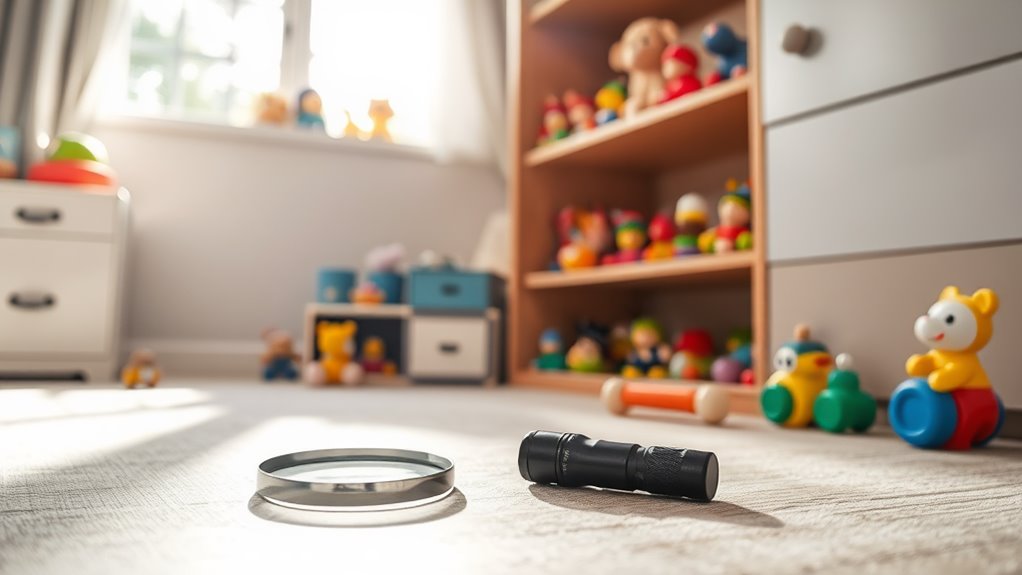
Regular inspections play an essential role in maintaining mold-free toy displays, as they help you catch issues early before they escalate. By routinely checking your displays, you can identify dampness, leaks, or other conditions conducive to mold growth. Make it a habit to inspect all areas, especially those less visible or prone to moisture buildup.
Start by examining for any signs of water intrusion, like stains or discoloration. Don't forget to check ventilation systems to verify they're functioning properly, as poor airflow can encourage mold. Incorporate a checklist to streamline the process and ascertain nothing's overlooked.
If you find any problems, address them immediately. Quick action prevents minor issues from becoming costly repairs. Consistent vigilance keeps your display attractive and safe for everyone.
Frequently Asked Questions
How Can I Identify Mold Growth in My Toy Displays Early?
You can spot mold early by regularly inspecting for discoloration, musty odors, or dampness. Use a flashlight to check hidden areas, and don't forget to touch surfaces for moisture. Staying vigilant helps prevent serious mold issues.
What Are Some Natural Remedies to Prevent Mold in Toy Displays?
Use vinegar to clean toy displays; it's a natural mold inhibitor. Keep air circulating by placing fans nearby. Opt for silica gel packets in display cases to absorb moisture, reducing mold risk. Regularly inspect for dampness.
Are There Specific Toys More Susceptible to Mold Growth?
Yes, certain toys are more prone to mold, especially those made of porous materials like fabric or wood. You should regularly inspect and clean them to make certain they're dry, reducing the chance of mold growth.
How Does Lighting Affect Mold Growth in Toy Displays?
You might think lighting's just for aesthetics, but it plays a role in mold prevention too. Bright, consistent lighting reduces humidity and inhibits mold growth. So, make certain your toy displays are well-lit to keep mold away.
Can Temperature Fluctuations Impact Mold Development in Toy Displays?
Yes, temperature fluctuations can impact mold development in toy displays. When temperatures change frequently, moisture levels can increase, promoting mold growth. You should maintain a consistent temperature to minimize moisture buildup and protect your toys from mold.
At a Glance
So, you've mastered the art of toy display mold prevention! You'll soon become the superhero of pristine playthings. With your secret weapons of ventilation and humidity monitoring, you'll strike fear into the hearts of pesky spores. Your arsenal includes regular cleanings and mold-resistant materials, ensuring those dastardly molds don't stand a chance. And let's not forget, your routine inspections are the final blow. Congratulations, you're now the caped crusader of mold-free toy displays!

